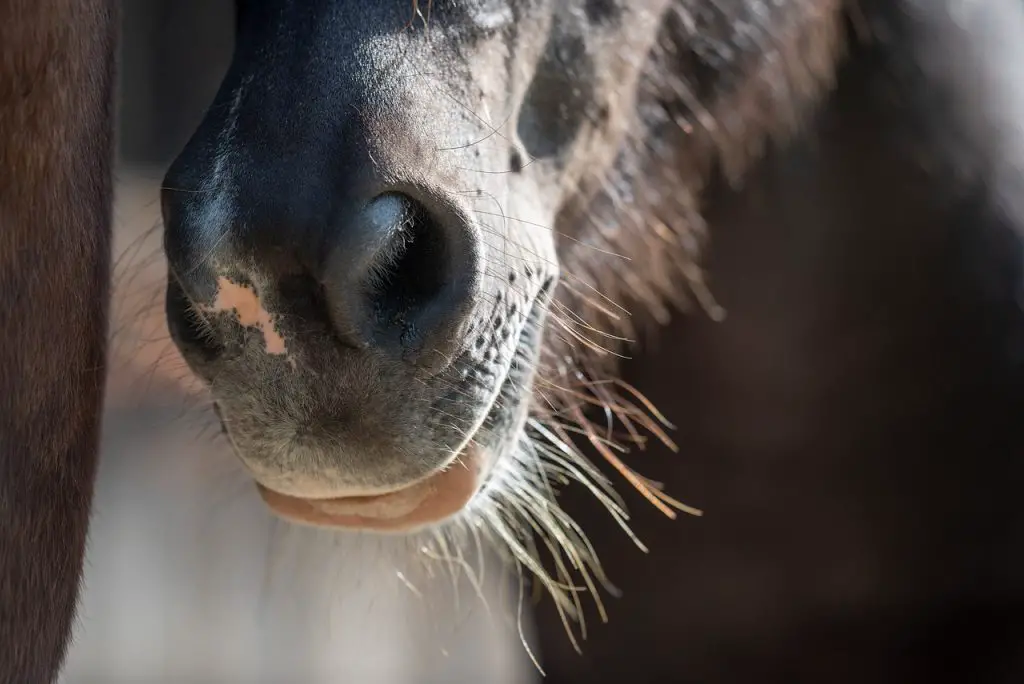
Parrot Mouth in Horses Tips & Info EVDS
Parrot mouth in a horse is often not present as a newborn foal, but becomes apparent when the horse is over 1-6 months old. The cause of parrot mouth is often not fully clear. Several causes are possible including genetics, trauma and illness as a foal near a period of rapid growth.

Incisor damage and parrot mouth The Equine Practice, Inc
Some horses have parrot mouth.Horse owners need to educate them selves about parrot mouth.Special equipment and tools are needed to help horses that have par.

Parrot Mouth In Horses The Horse's Advocate
A Case Report on Parrot Mouth. A veterinarian offers insight into managing the oral deformity known as parrot mouth. By Patty Latham, DVM for EQUUS magazine. Even though it would take six to nine months for all of Sugar Shack's baby teeth to come in, we could tell from our first examination, done on the day he was born, that the long-legged.

AskHQ What is a parrot mouth? HQ Magazine
Birds are a group of warm-blooded vertebrates constituting the class Aves (/ ˈ eɪ v iː z /), characterised by feathers, toothless beaked jaws, the laying of hard-shelled eggs, a high metabolic rate, a four-chambered heart, and a strong yet lightweight skeleton.Birds live worldwide and range in size from the 5.5 cm (2.2 in) bee hummingbird to the 2.8 m (9 ft 2 in) common ostrich.

General Dentistry Parrot Mouth The Horse's Advocate
This condition is called "parrot mouth" in horses. Brachygnathism is common in horses, due to either a long upper jaw (maxilla) or a shortened lower jaw (mandible). It may be inherited or occur during pregnancy due to treatment of the mare with certain drugs.

Parrot Mouth The Horse's Advocate
Parrot mouth in horses is a defect of the mouth that looks basically like an overbite or underbite where the upper and lower teeth don't touch. Photos here are of my mare, a 4 year old Off the Track Thoroughbred, with no parrot mouth from either the Sire or Dam side.

Parrot Mouth in Horses Pictures & Explanation Helpful Horse Hints
BRAD TANNER Parrot mouth refers to the position of the upper lip that is forward and lower than the lower. This is the term for horse overbite malocclusion. If the top jaw is growing faster than the lower, the front teeth will become longer and less in contact with the lower incisors.

Parrot Mouth In Horses . We Know Working Horses
Parrot mouth, also referred to as overbite or brachygnathism, is a dental abnormality characterized by an upper jaw that protrudes beyond the lower jaw. This misalignment prevents the horse's teeth from meeting properly, leading to difficulties in chewing, digestion, and accepting a bit.

Parrot Mouth in Horses Thompson and Redwood
Dental conditions (such as broken or irregular teeth) are common causes of loss of appetite or weight or a general loss of condition. The classic signs of dental disease in horses include difficulty or slowness in feeding and a reluctance to drink cold water. While chewing, the horse may stop for a few moments and then start again.

What To Do About ‘Parrot Mouth’ Just for my Horse
What is a Parrot Mouth in Horses? Horses with parrot mouths, where the top and lower teeth do not meet, have a mouth deformity resembling an overbite or underbite. "No occlusal contact between the upper and lower central incisors" is the definition of parrot mouth given by the American Association of Equine Practitioners.

Parrot Mouth in Horses Tips & Info Toothfest
Foals with an overbite, commonly called a parrot mouth, have upper incisors that protrude past the lower incisors. While some breeders droop their shoulders and shake their heads when faced with affected foals, floundering in their misfortune, others pick up the phone and call the equine orthodontist.

Parrot Mouth in Horses Pictures & Explanation Horses, Pet birds, Horse pictures
An overjet—also known as "parrot mouth," in which the top incisors are more advanced than the bottom incisors—can create health and welfare issues in horses, say German researchers..

Parrot Mouth The Horse's Advocate
Overbite affects the whole jaw causing the misalignment of all cheek teeth. This misalignment creates hooks on the 1st lower and last upper cheek teeth. A parrot mouth only affects the incisor teeth. They have no problem harvesting pasture because the incisors are not used for biting the grass. Instead, the horse traps the grass between the.

FileParrot mouth horse.jpg Wikipedia
Parrot mouth is the most common form of overshot jaw — this means the upper jaw is relatively longer than the lower jaw.. For the full article on parrot mouths, see the current issue of Horse.

Parrot Mouth In Horses We Know Working Horses
Parrot Mouth in horses is a defect of the mouth that looks basically like an overbite or underbite where the upper and lower teeth don't touch. The American Association of Equine Practitioners defines parrot mouth as "no occlusal contact between the upper and lower central incisors". What is Buck Teeth in Horses?

Parrot Mouth in Horses Pictures & Explanation Helpful Horse Hints
What you see. The starting point for addressing any equine health related issue is your observation. YOU ARE OBSERVING Parrot Mouth or Overbite Summary You notice that a horse has an overbite, meaning that the front edge of the top incisor teeth (nipping teeth) is further forward than the front edge of the lower teeth.